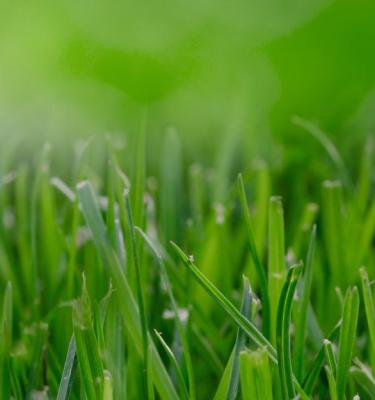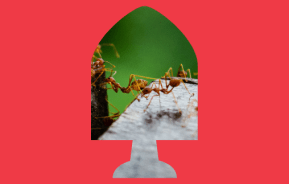
Weed 'Em and Reap: Mastering Lawn Weed Control
Are weeds taking over your lawn and you’re not sure where to start? We’re here to help!
First step is to identify what weeds are in your lawn. We’ve pulled together the most common weeds found in Aussie lawns, plus some simple steps to help you win the war against the weeds!
Let’s break it down.
What Are Lawn Weeds?
Lawn weeds are those uninvited party crashers like broadleaf weeds—think dandelions, plantains, and cudweed —that always seem to ruin a good party. Other notable troublemakers include pesky grasses like winter grass and paspalum.
Unfortunately, getting rid of them isn’t as easy as it should be, use the wrong product or leave some roots behind and you might harm your lawn or let the weeds continue to grow.
Top 11 Most Common Lawn Weeds
Clover
Clover loves nutrient-poor soils, which often happens when fertilising isn’t part of your lawn care routine. You’ll soon notice an infestation of little white-flowers and three-leaved clovers covering your precious lawn.
Growing vigorously from late autumn through winter, clover calls for action come mid to late winter—before it starts flowering! Hit it with a Scotts Lawn Builder Weed, Feed & Green-Up for a 3-in-1 fast action solution.
Don’t forget to mow before it sets seed, in other words, before the flowers have been pollinated and start to grow seeds. This will help keep next year’s clover crop in check.
Creeping Oxalis
As its name suggests, creeping oxalis is a sneaky weed that grows undercover and spreads like wildfire. You might not notice it until it’s in full bloom, broadcasting its light green leaves that can turn burgundy in certain conditions.
Creeping oxalis thrives in winter and flaunts its flowers in early to mid-spring. Pulling it out may seem easy, but beware because every tiny piece left behind can root and keep the invasion going strong.
To send it packing, you’ll need to use a selective lawn weed killer two or three times, starting mid-winter and into spring. The secret? Nip it in the bud before it flowers and sets seed.
Capeweed
Kids may love making daisy chains from capeweed’s yellow and black flowers, but passionate lawn owners see it as a persistent nuisance. This vigorous weed with deep roots thrives in neglected lawns and spreads seeds like a pro.
Capeweed, akin to the sunflower in fact, germinates in autumn and flourishes over winter, showing off its flowers come early spring.
Maintaining a well-fed and watered lawn is the best way to prevent capeweed from taking hold in the first place, so even if you can’t see it now—get prepared!
Chickweed
Soft-leaved and sneaky, chickweed loves cooler climates and can overrun lawns and garden beds in winter. Despite its weedy nature, it’s edible—its flowers and leaves make for a tasty addition to salads or cooked dishes.
Chickweed disappears with warmer spring temperatures, making early eradication crucial before it sets seed. You can pull chickweed by hand, ensuring that you get all the roots too, or an easier, more effective way is to use a lawn weed killer product while it’s actively growing.
Cudweed
Ever noticed patches of cudweed taking over your winter lawn? This flat broadleaf weed starts off innocently enough, but if you don’t act now, it will take over your lawn quicker than you can say Scotts Lawn Builder Weed Feed Green-Up.
Manual hand removal with a pronged lawn weeder can work well. Or opt for a selective broadleaf lawn weed killer.
Dandelion
Ah, the dandelion—a lawn and garden classic. Its yellow flowers and fluffy seeds can travel hundreds of kilometers on air currents, thanks to their delicate ‘parachutes.’ Break a stem, and you’ll see the telltale dandelion white sap.
With sturdy roots and a knack for thriving in any climate, dandelions aren’t precious about where they grow. They are most active in winter and burst into full bloom in early spring. So, to stop them in their tracks, remove the roots with a pronged lawn tool or use a targeted lawn weed killer before those fluffy seed heads appear for another year.
Docks & Sorrels
Meet docks and sorrels—edible members of the buckwheat family that also happen to be rampant lawn weeds across Australia. These guys sport deep roots and fat leaves in a loose rosette pattern.
They thrive in winter, outshining slow-growing grasses, and bloom in spring and early summer. In gardens, docks produce copious seeds, but when in lawns, regular mowing can keep them in check.
However, if they do take hold in your lawn, combat them with one or two early spring with Scotts Lawn Builder Weed, Feed & Green-Up before they go to seed. You can dig them out, but make sure you get their roots and all - and be prepared for some unsightly bare patches.
A TIP: Fill bare lawn patches with Scotts Lawn Seed. See our How To Fix Patchy Lawns article for more.
Lamb’s Tongue Weed (Plantain)
Lamb's tongue or plantain stands out with its elongated leaves and tall flower spikes. In regularly mown or high-traffic lawns, it forms flat rosettes but can (and will) spread rapidly throughout your lawn.
Found across Australia, especially in coastal regions, plantain loves winter and seeds prolifically through spring and summer. Luckily, it’s responsive to late winter treatments with lawn weed killers. We recommend a follow-up treatment a couple of weeks later to ensure complete eradication and protection of your lawn.
Wireweed (Knotweed)
Don’t let wireweed fool you with its tangle of wiry stems and small, clustered flowers. This low-growing pest loves neglected lawns and nutrient poor soils.
Wireweed seeds germinate in spring and summer, making late spring to early summer the best time to apply Scotts Lawn Builder. It might need more than one treatment to fully control, but with persistence and the right product, your lawn can be wireweed free.
The Final Word on Lawn Weeds
So there you have it - 11 of Australia’s peskiest lawn invaders. But fear not! Armed with the right tools and a bit of determination, these persistent weeds can be sent packing.
Remember, whether it’s tackling Bindii underfoot or saying good riddance to plantain, maintaining a healthy lawn is your best defence. Happy weeding!








